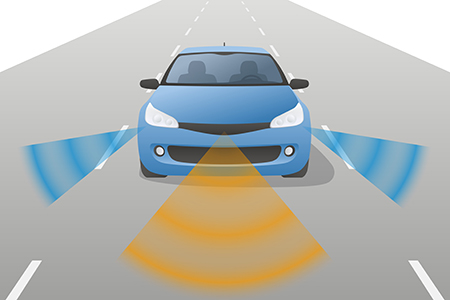(TNS)–If Ford, Volvo, GM and Uber are to be believed, self-driving cars will soon dominate our roads, and car ownership will be a thing of the past.
If regular consumers are to be believed, automakers need to hold their horses, because people aren’t ready for a self-driving future. Those are the findings from a new survey commissioned by Kelley Blue Book, which polled 2,264 U.S. residents, weighted to census figures by age, gender, ethnicity and location.
The results found that 80 percent of survey participants said people should “always have the option to drive themselves.” Sixty-four percent of respondents said they need to be in control of their own vehicle, and 62 percent said they enjoy driving.
When asked about fully autonomous cars—cars that drive themselves and do not have steering wheels or pedals—a third of respondents said they would never buy such a vehicle. That could be bad news for Google and other automakers currently at work on such products.
When asked whether they thought they would live to see a world in which all vehicles are fully autonomous, 62 percent of respondents answered no. Baby boomers were the most resistant (76 percent), followed by Gen Xers (64 percent) and millennials (60 percent). Gen Z respondents (ages 12 – 15) were the most optimistic about a future full of self-driving cars, with only 33 percent expressing doubt.
And for all the talk about self-driving cars in the news, 25 percent of participants said they “know nothing” about the vehicles, 35 percent said they “know a little”, and 28 percent said they “know some.”
“The industry is talking a lot about self-driving vehicles these days…(but) much is still unknown about fully autonomous vehicles, including how they would react in emergency situations,” says Karl Brauer, an analyst at Kelley Blue Book.
Self-driving cars are divided into levels based on how involved a human driver needs to be. The Kelley Blue Book survey used six levels, with Level 0 requiring a human driver to control everything, and Level 5 not offering an option for human driving.
Most modern vehicles are Level 1 or 2, with the latter offering at least two automated functions such as cruise control or lane centering. Brauer says such “lower-level options are gaining steam, with many Americans interested in purchasing vehicles with Level 2 semi-autonomous features.”
The survey also found that Level 4, in which a car can drive itself without human intervention but allows drivers the option of taking over, to be the “sweet spot” for vehicle autonomy. But as soon as the idea of a computer-only driven car was raised, consumer interest dropped off.
“For tentative buyers, first-hand experience like test drives, short-term leasing or daily rentals will be crucial when making future purchasing decisions,” says Brauer, who notes that ordinary consumers were more open to the idea of handing control over to a computer once they’d had experience with cars that have some level of autonomy.
“Automakers will need to address hesitant drivers in order to be successful,” Brauer says.
©2016 Los Angeles Times
Distributed by Tribune Content Agency, LLC.










